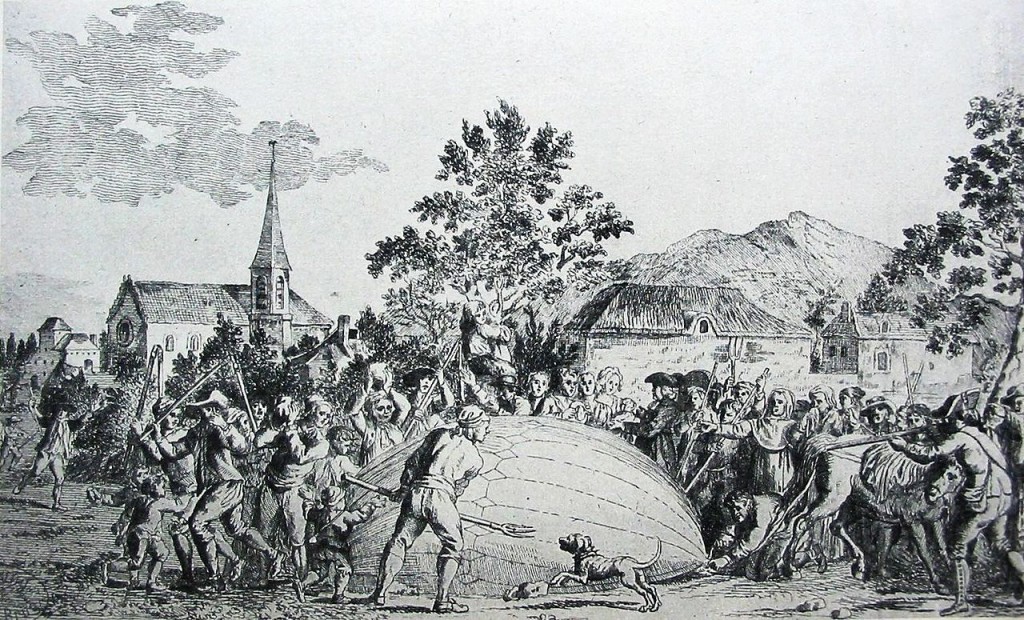Following Henry Cavendish’s 1766 work on hydrogen, and Robert Boyle’s Boyle’s Law which was published 100 years earlier in 1662, Joseph Black proposed that a balloon filled with hydrogen would be able to rise in the air. Jacques Charles, whose study of gases led to his namesake law of volumes, had studied the work of Cavendish, Black and Tiberius Cavallo, and conceived the idea that hydrogen would be a suitable lifting agent for balloons.
Jacques Charles designed the hydrogen balloon, and the Robert brothers invented the methodology for constructing the lightweight, airtight gas bag. They dissolved rubber in a solution of turpentine and varnished the sheets of silk that were stitched together to make the main envelope. They used alternate strips of red and white silk, but the discolouration of the varnishing/rubberising process left a red and yellow result.
Jacques Charles and the Robert brothers launched their balloon, the world’s first hydrogen-filled balloon, on August 27, 1783, from the Champ de Mars (now the site of the Eiffel Tower); Benjamin Franklin was among the crowd of onlookers. The balloon was comparatively small, a 35 cubic metre sphere of rubberised silk, and only capable of lifting about 9 kg. It was filled with hydrogen that had been made by pouring nearly a quarter of a tonne of sulphuric acid onto half a tonne of scrap iron. The hydrogen gas was fed into the envelope via lead pipes; but as it was not passed through cold water, great difficulty was experienced in filling the balloon completely (the gas was hot when produced, but as it cooled in the balloon, it contracted). Daily progress bulletins were issued on the inflation; and the crowd was so great that on the 26th the balloon was moved secretly by night to the Champ de Mars, a distance of 4 kilometres.
The balloon flew northwards for 45 minutes, pursued by chasers on horseback, and landed 21 kilometres away in the village of Gonesse where the reportedly terrified local peasants attacked it with pitchforks or knives and destroyed it. The project was funded by a subscription organised by Barthélémy Faujas de Saint-Fond.